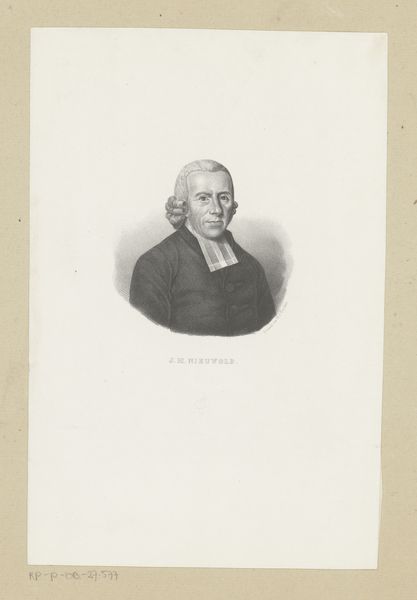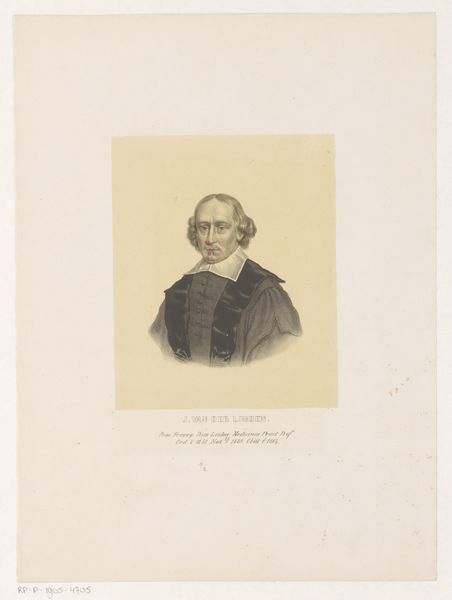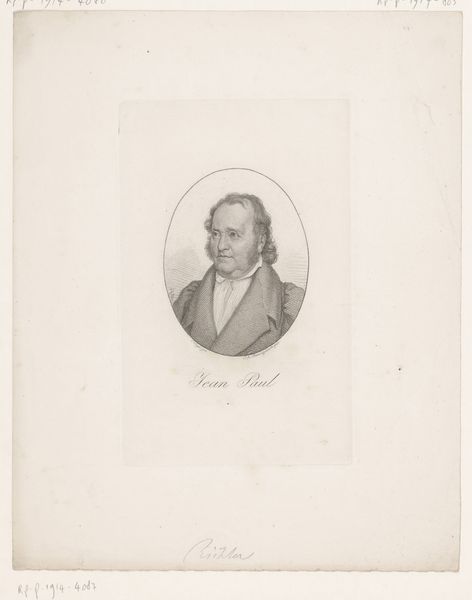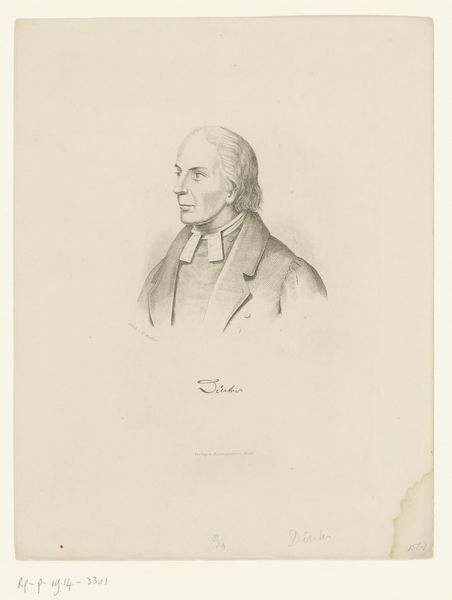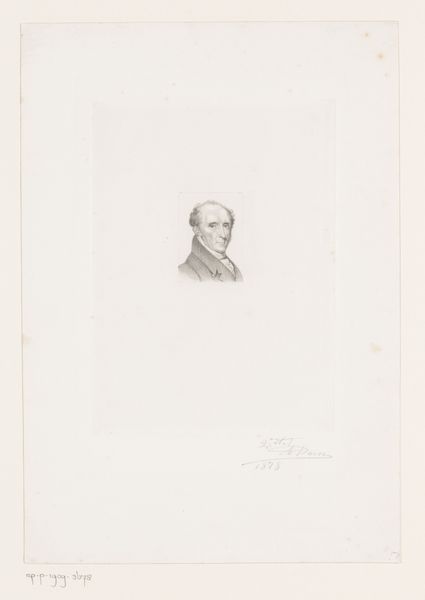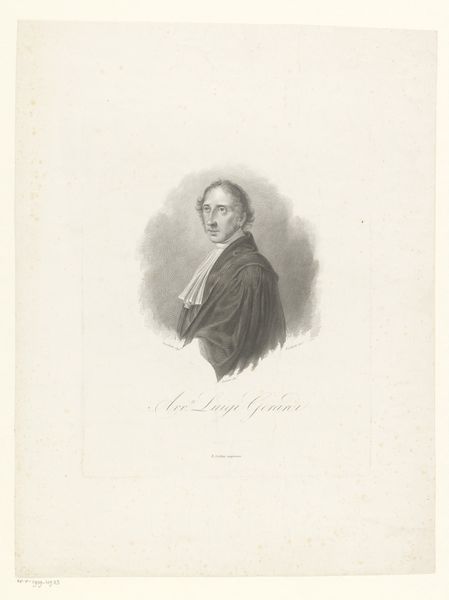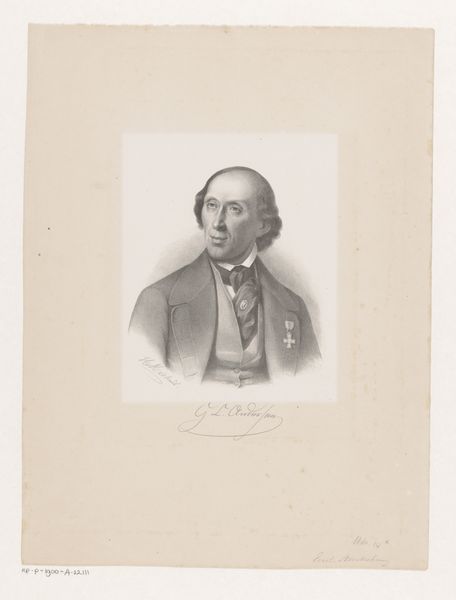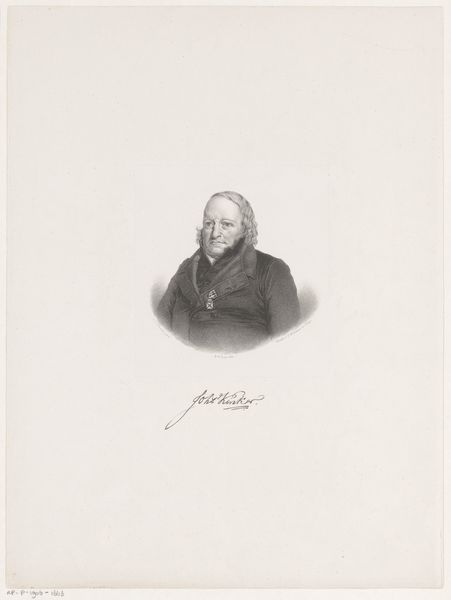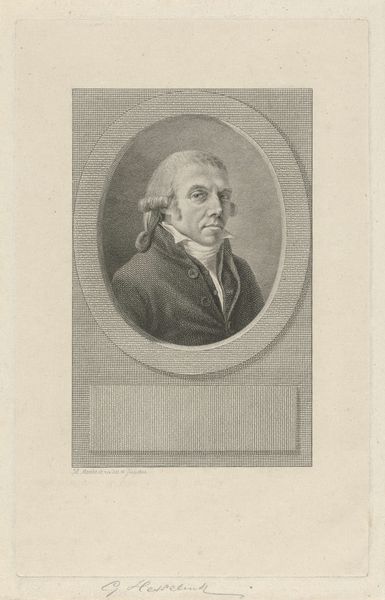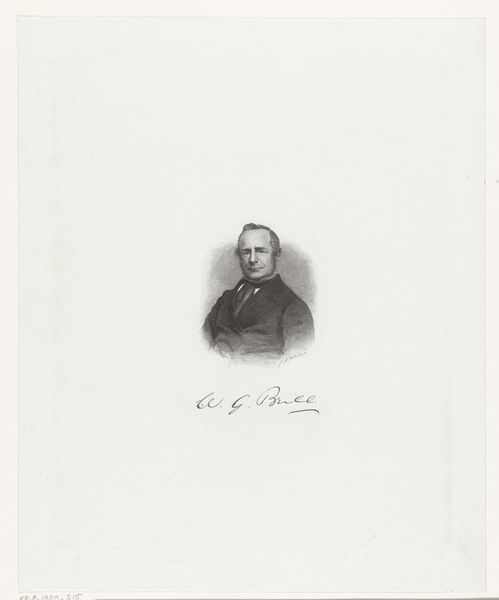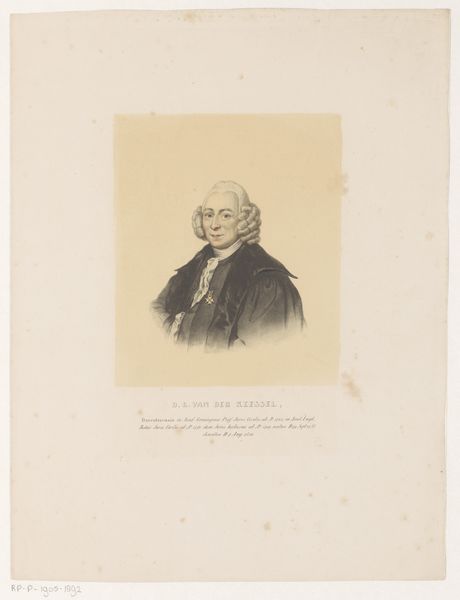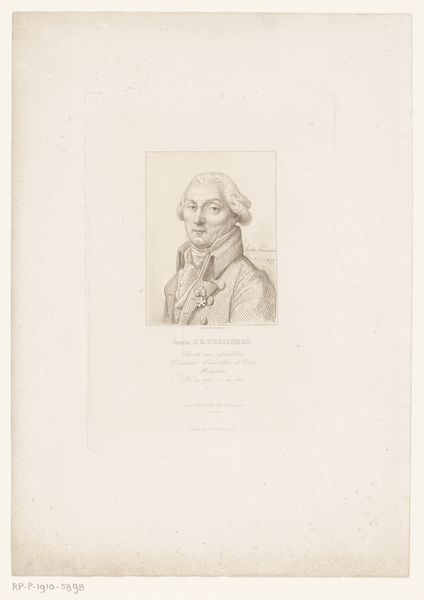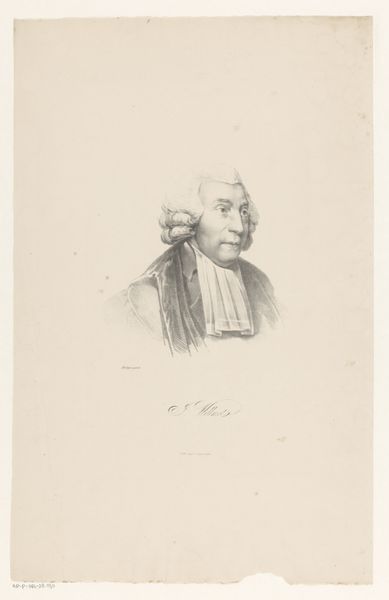
drawing, pencil
#
portrait
#
pencil drawn
#
drawing
#
pencil sketch
#
pencil drawing
#
romanticism
#
pencil
#
pencil work
#
academic-art
#
realism
Dimensions: height 141 mm, width 96 mm
Copyright: Rijks Museum: Open Domain
Johannes Alexander Rudolf Best made this portrait of his father, I. Best, sometime in the first half of the 19th century. It is a very modest lithograph, a newly available technology in the Netherlands that democratized image production. Consider what it meant for an artist to produce a portrait of his father. One might begin to understand it as an act of filial piety, an expression of familial sentiment in a rapidly modernizing society. But the context of the early 1800s was one in which the Netherlands was struggling to redefine itself after the Napoleonic era. It was a period when the country's cultural institutions, including its art academies, were attempting to foster a sense of national identity. Who were the artists being produced and who were their subjects? Careful archival research can teach us about this, while helping us to understand the social function of art during this transformative period.
Comments
No comments
Be the first to comment and join the conversation on the ultimate creative platform.
